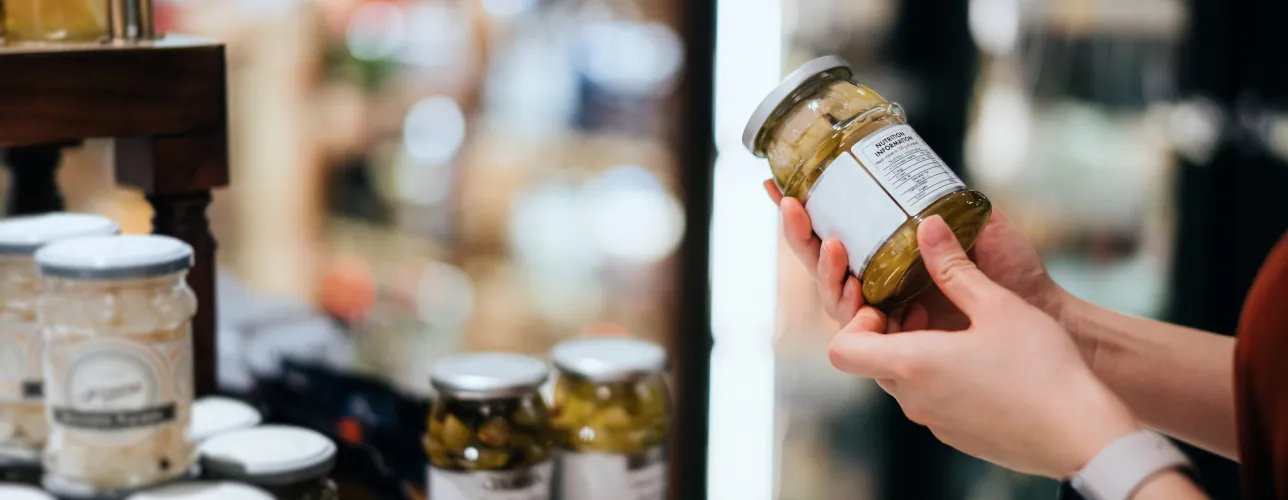If you have chosen to start your journey with certification to a GFSI recognized food safety scheme, we recommend the following process:
- Choose your scheme
The GFSI recognized food safety schemes you can choose from are: BRCGS, IFS, FSSC, or SQF. Look at the different schemes to decide which one fits your operations best. This is usually when you choose your preferred certification body (CB), as well. DNV can help outline the approaches of each standards. Some standards are more prescriptive while others are more systems-based, which means they integrate more easily with an existing ISO based quality management systems, for example.
- Self-assess with DNV's free tool
Check your compliance against the requirements of the chosen standard. DNV offers free self-assessment tools to help you evaluate your performance. These can also be used throughout the process, guiding internal audits and checking if you are ready for certification. It helps you identify gaps, food system revisions or training needs, and other areas for improvement.
- Get training
To develop and implement a food system and prepare for certification, you may need to build internal competence. DNV offers public and in-house training courses on the GFSI recognized standards, internal auditor training and courses on HACCP, allergen management, and so on. We are here to help you close any knowledge gaps.
- Prepare
This step is all about implementing your food safety system in line with your chosen standard. Some companies choose to work with a consultant to guide their food safety systems development. A consultant does not work for the certification body. To ensure progress, it is important to conduct internal audits along the way.
- Pre-Assessments
As you get closer to the certification audit, a more extensive gap-analysis of the food safety system can be of value. While an optional step, DNV auditors would take a deeper look to identify where there may be weaknesses in the food system. If not addressed, these would lead to non-conformities, i.e. a failure to comply with a requirement in the standard. When rectified before the audit, it makes for a more efficient certification process. It can also provide confidence that you are now ready for certification!
- Certification audit
Before your scheduled certification audit, you will have received an agenda for the day(s) on site audit. This lets you can prepare and plan for staff to be present. During the audit, the auditor(s) will assess your food system documentation, relevant records, the factory and training conducted. There will also be interviews and discussions with staff at all levels of your organisation. At the end of the audit, you will be presented with the list of findings.
- Audit report
After the audit, you will receive your audit report which includes written detail of the audit and findings. This includes non-conformities which must be closed before your food system is found compliant. It also includes a management summary providing a high-level overview of your performance. The audit report is for your internal use to further improve your food safety system.
- Close audit findings
The site being certified will have to review the findings, perform a root cause analysis, perform corrective actions and establish a corrective action plan to prevent recurrences. This can be done digitally using DNV’s free tool eAdvantage. The same platform can be used to get an overview of all audits and sites. You can also go back in time to review finding and share dedicated dashboards with colleagues.
- Certificate awarded
Your auditor assesses the actions and plans before it goes for an independent technical review. The independent reviewer is from DNV but was not part of the actual audit. Upon the audit report approval, your certificate is issued. You can now share your certification with Yum! and any other customers. All certificates are issued on DNV's secure certificate storage. Anyone can therefore easily and instantly digitally verify its authenticity and validity.
- Maintain certification
Depending on the standard you choose, your certificate is valid for 1 or 3 years. For example, for BRCGS, IFS and SQF require annual recertification audits with one unannounced audit in year 2 or 3. For FSSC, the certificate is valid for three years with year 3 being the recertification year and the audit in in year 2 or 3 being unannounced. It is important that you plan and budget for this. Keep in mind that it will help you continually improve and allow you to leverage on your food safety system to reach your business goals. DNV will continue to be your go-to certification partner for queries, scheme updates, insight and training in addition to the audits.



